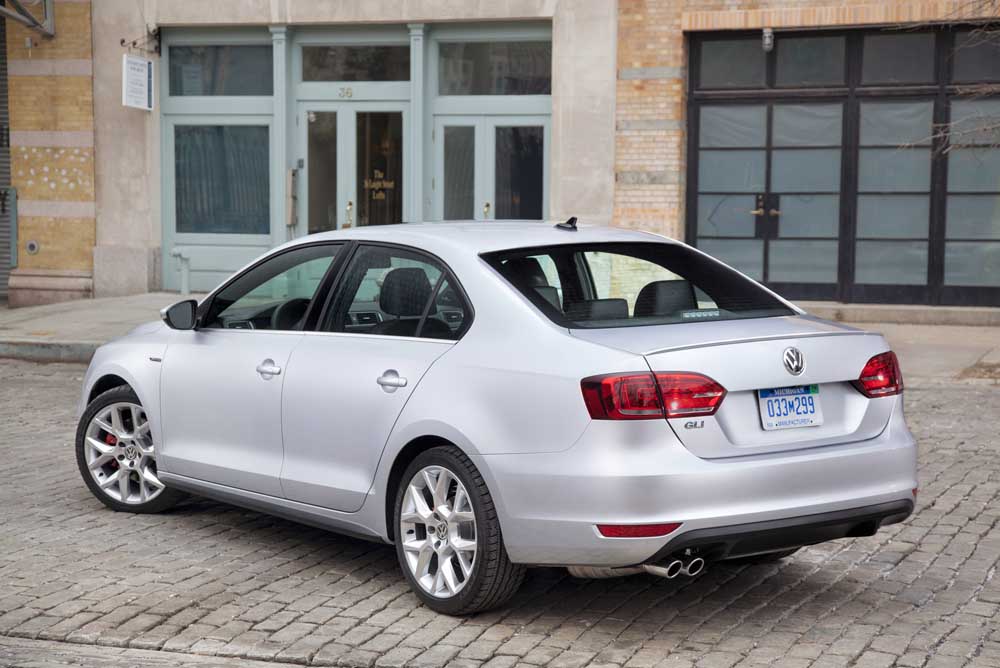New Jetta is good, not great
Published 12:00 am Sunday, August 17, 2014

- Courtesy Volkswagen of America via The New York TimesThe sporty GLI version of the Jetta made its debut 30 years ago. The Edition 30 package includes red highlights on the grille and upholstery.
Volkswagen has been languishing in the United States. While its Audi luxury division has done well, the VW brand itself has been losing sales traction.
Despite loudly proclaimed high ambitions — in 2009, VW announced its intention to triple its United States sales — and large investments in American production facilities, sales fell 13 percent in the first six months of this year, according to Automotive News, compared with the first half of 2013.
Trending
And that decline came as most mainstream brands were growing. Nissan was up 13 percent. Chevrolet, despite all those recalls, gained 1 percent. And Subaru, once a marginal also-ran, jumped 16 percent, selling 238,008 vehicles to VW’s 179,144.
Some of VW’s lackluster sales can be attributed to poor reliability ratings in surveys by Consumer Reports and others. Some is due to the company’s inability to develop products with lasting appeal in this market. Either way, the wind is out of VW’s sails, and its sales.
So here is the Jetta GLI, the most sporting, most expensive version of VW’s best-selling car in America. My test car was practically blinding in Tornado Red paint, riding on a set of luscious 18-inch alloy wheels — a bold machine in a compact sector where most sedans are dressed in gentle gray, somnambulant silver or passive pewter. The GLI is a car built to add excitement to the line.
The wheels are part of an Edition 30 package that celebrates the 30th anniversary of the GLI. (The Jetta itself has been around since 1979.) It looks suitably Germanic, and VW likes to boast that it was engineered in Germany, but the Jettas sold in the United States are assembled at VW’s huge plant in Puebla, Mexico.
The Edition 30 treatment includes a red line across the grille, a trunk lid spoiler, some contrasting upholstery stitching, a few bits of carbon-fiber trim and the critically important Edition 30 badging. So if you love red lines on your grille, buy an Edition 30 right now; it’s unlikely that there will be an Edition 31 next year.
The formula for the GLI has always been straightforward. Since the Jetta has essentially been a Golf with a trunk, and the Golf GTI is a Golf with more power and better handling, it is easy to apply the distinctive GTI parts to the Jetta. The current Jetta, which was thoroughly redesigned for the 2011 model year, isn’t as closely related to the Golf as previous models had been, but the two cars are still close.
Trending
The test car was a Jetta GLI Edition 30 With Navigation (yes, that’s the proper name) with a $30,595 sticker price including an oppressive $820 delivery charge and no options. The GLI shares its turbocharged, direct-injected 4-cylinder engine, which makes 210 horsepower, with the GTI. The same 2-liter engine can be found in the Audi A3 Quattro and the A4, producing 220 horsepower in a slightly different state of tune. And for no apparent reason, opting for the navigation system also brings along “Bi-Xenon” headlights with LED daytime running lights and halogen fog lights that come on to throw additional lumens into turns.
I refuse to pass along rumors that Bi-Xenons will soon invade the Earth and enslave us all.
In contrast, the basic Jetta S, powered by a naturally aspirated 115-horsepower 2-liter engine, starts at $17,715. One step up is the $19,715 SE powered by a turbocharged 170-horsepower 1.8-liter 4-cylinder. So the GLI Edition 30 flies high over lesser Jettas.
But there’s still a lot of $18,000 Jetta S in this $30,000 GLI. The interior decoration isn’t just austere, it’s severe. The dashboard shapes are simple, the controls are straightforward and what decoration exists is easy to overlook. There’s nothing about the controls that’s illogical or frustrating, but there’s nothing memorable either.
Then there are the door panels, which are hard and unyielding. Softer textures there would make the whole cockpit feel richer and more comfortable.
Beyond that, the navigation screen is a puny 5 inches and the menus one has to scroll through to get anything done are obscure. I never did get my iPhone 5S to sync with the GLI’s Bluetooth system.
But the Fender-branded sound system makes fantastic noise.
The “leatherette” front seats aren’t as supportive as they should be, and for no apparent reason are not the same ones used in the GTI. But things improve when the start button low on the center console is pressed, the engine whirs to life and settles into a deceptively anonymous idle. Deceptive simply because this engine is flat wonderful. Flat, like its torque curve.
While the 210-horsepower rating seems modest — the Ford Focus ST’s 2-liter turbo engine is rated at 252 horsepower — the 207-pound feet of peak torque is available way down at 1,700 rpm and then keeps on pulling. There are moments when snicking through the light-shifting 6-speed manual transmission seems almost superfluous. The low-end torque production is so easygoing that it doesn’t matter that the engine’s redline — the upper limits of safe operation — is only 6,100 rpm.
If the stick shift is too much work, a dual-clutch 6-speed automated transmission is also available for another $1,100. Car and Driver magazine tested a manual transmission 2013 Jetta GLI — when the engine was rated at 200 horsepower — and achieved a 0 to 60 time of 6.4 seconds. The current car doesn’t feel any quicker than that.
No surprise that the engine in the new GLI behaves identically to that in the last 2013 GTI that I drove (I haven’t sampled the new 2015 GTI.) The chassis, on the other hand, doesn’t.
While all 2011 Jettas used an inexpensive twist-beam axle in back, in 2013 VW wisely upgraded the GLI to the all-independent multilink system used in the GTI. All 2014 Jettas now use the multilink system.
But despite the improved tail end, the Jetta GLI lacks the Golf GTI’s fingertip sensitivity and eagerness to dive into corners. Some of that is due to the 104.4-inch wheelbase, which is almost three inches longer than the last-generation GTI, and more of it is likely due to the 16.3 inches of additional overall length. The two cars use electrically assisted rack-and-pinion steering with the same ratio, and ride on the similar 225/40R18 all-season performance tires, but the Jetta feels heavier. There’s still fun to be had with the GLI, but it’s not as engaging as its little brother.
More irritating is a lack of sophistication in the ride quality. There’s plenty of room in the Jetta’s rear seat, but passengers back there take a beating on bumpy pavement. The harsh ride isn’t as noticeable from the front seats, but my wife and children complained loudly about their discomfort. In the back at least, where that big 15.5 cubic-foot trunk lives, VW has more stiffly sprung the Jetta GLI than the hatchback GTI.
Many of the revisions made to create the Jetta GLI Edition 30 forecast revisions that VW will make to the whole Jetta line for 2015. But they’re revisions and not a redesign.
What the Jetta GLI lacks is eagerness, a passion that would outshine its conservative design. After all, Tornado Red paint only takes you so far.
The GLI is neither a GTI with a trunk, nor a budget alternative to the high-style Audi A3. It needs to be at least as compelling as one of those if VW is going to tack into the wind and fill its sails.








